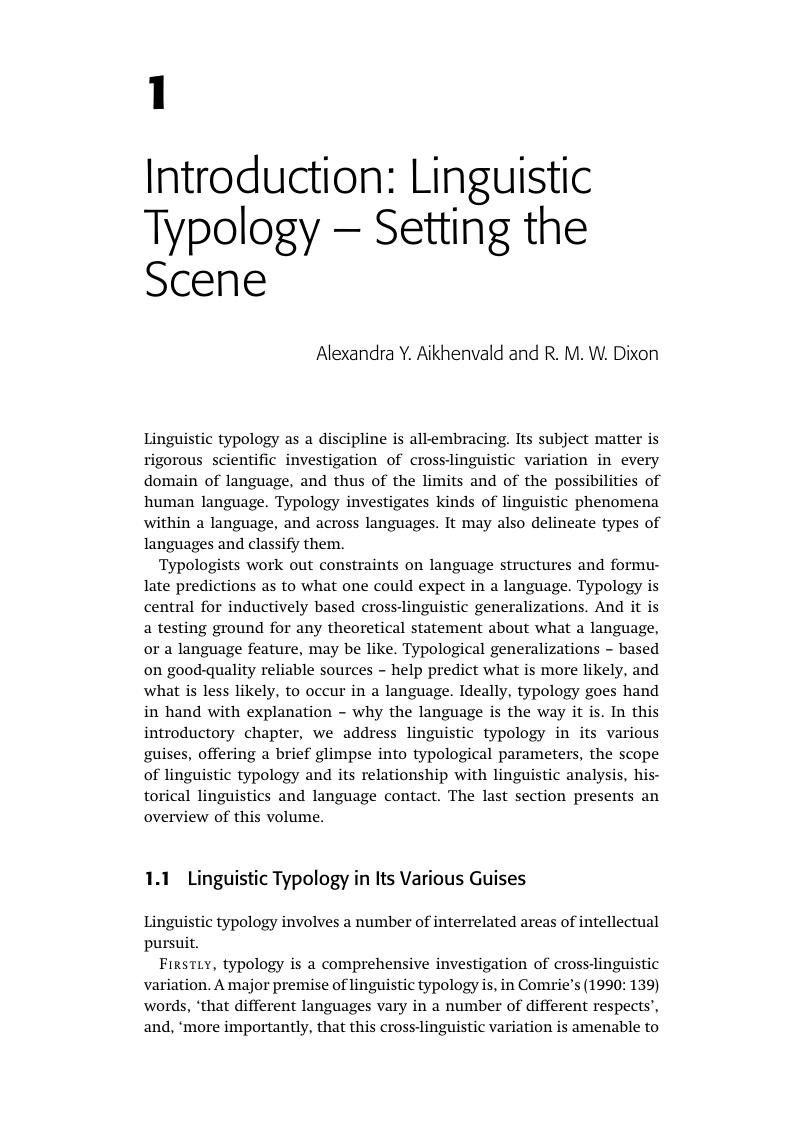Book contents
- The Cambridge Handbook of Linguistic Typology
- Cambridge Handbooks in Language and Linguistics
- The Cambridge Handbook of Linguistic Typology
- Copyright page
- Contents
- Figures and Diagrams
- Tables
- Maps
- Contributors
- Acknowledgements
- Abbreviations
- 1 Introduction: Linguistic Typology – Setting the Scene
- Part I Domains of Linguistic Typology
- Part II Typology of Grammatical Categories
- Part III Typological Profiles of Linguistic Areas and Language Families
- Index of Authors
- Index of Languages, Language Families and Linguistic Areas
- Index of Subjects
- References
1 - Introduction: Linguistic Typology – Setting the Scene
Published online by Cambridge University Press: 13 April 2017
- The Cambridge Handbook of Linguistic Typology
- Cambridge Handbooks in Language and Linguistics
- The Cambridge Handbook of Linguistic Typology
- Copyright page
- Contents
- Figures and Diagrams
- Tables
- Maps
- Contributors
- Acknowledgements
- Abbreviations
- 1 Introduction: Linguistic Typology – Setting the Scene
- Part I Domains of Linguistic Typology
- Part II Typology of Grammatical Categories
- Part III Typological Profiles of Linguistic Areas and Language Families
- Index of Authors
- Index of Languages, Language Families and Linguistic Areas
- Index of Subjects
- References
Summary

- Type
- Chapter
- Information
- The Cambridge Handbook of Linguistic Typology , pp. 1 - 36Publisher: Cambridge University PressPrint publication year: 2017

